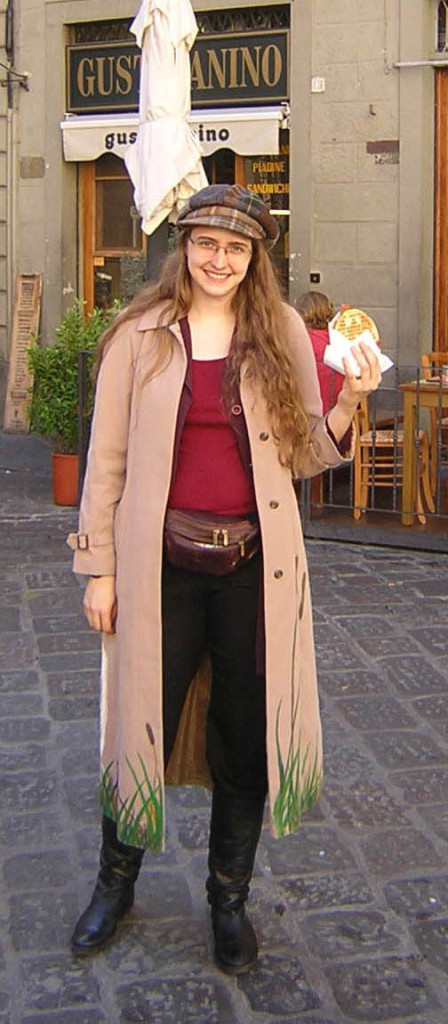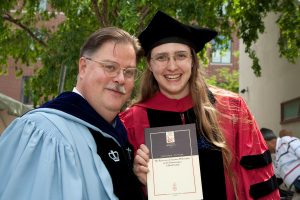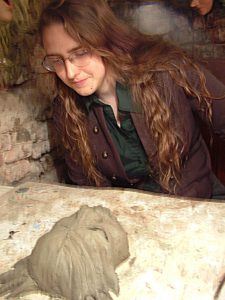
All my projects stem from my overall interest in the relationship between ideas and historical change. Our fundamental convictions about what is true evolve over time, so different human peoples in different times and places have, from their own perspectives, lived in radically different worlds with radically different rules. The universe which a medieval student of Thomas Aquinas thought he occupied was different from the universes in which Plato or Machiavelli or a Viking or Freud believed they lived, to the degree that what seem like simple fundamentals, such as reasoning from action to likely cause or consequence, yielded completely different “logical” answers in each of their worldviews. I find it fascinating how the different realities and rules which past peoples have believed in, and the science and technologies they generated, have in turn shaped the futures they tried to build out of what they inherited from the past, shaping the history of human civilization. Our own current efforts to build the future are also predicated on what we believe is true, our current models of science and ethics, and what consequences we think our actions will bring about, but what we believe is not what any past culture has believed, nor what any future culture will believe.
My research on intellectual history, or the history of ideas, is a way of exploring how our ideas affect what civilizations do, build and aim at, and how events change those ideas, history and thought shaping each other over time. The Italian Renaissance is a great moment for approaching this question because at that point the ideas about science, religion and the world which had developed in the Middle Ages suddenly met those of the ancient world, reconstructed from rediscovered sources. All at once many beliefs, scientific systems and perceived worlds clashed, mixed and produced an unprecedented range of new ideas all at once, which in turn shaped the following centuries and, thereby, our current world. My blog, Ex Urbe, is a way of sharing my exploration of these questions in a more speculative and casual arena than academic writing.
My interest in science fiction and fantasy relates to this too, since the imagined worlds and times created by Tolkien or Asimov or Tezuka are different from each other much as those of Plato and Aquinas are, and through them we can explore yet more variants on what people might be like, and what civilizations and futures they might build given different worlds. In my own fiction I use worldbuilding to explore alternate ideas and mindsets which human cultures could have, and how those ideas would affect both events and people’s understandings of their past. This is why I think of my Terra Ignota series in particular as “Future Historical Fiction,” looking at an imagined Earth future but in a style we usually use to examine Earth’s past.
A February 2018 article about me in UChicago Magazine is also interesting in the way it covers my range of interests.
Education and Background: (see also my CV)
I grew up in Annapolis MD and attended the Key School, then the Bryn Mawr School in Baltimore. In 1997 I became frustrated with high school, so left without graduating at the age of 16, and went to college two years early. I attended Simon’s Rock College of Bard for two wonderful years, then transferred to Bryn Mawr College for my final two years, because I wanted more Latin and Ancient Greek so I could be a Renaissance Historian.

I graduated from Bryn Mawr in 2001, and chose Harvard for my Ph.D. specifically because I wanted to study with James Hankins, whose intellectual history work on the impact of the rediscovery of classical thought in the Renaissance fit my interests perfectly. While at Harvard I spent several long patches of time doing research in Rome and Florence, including once as a graduate fellow at the Villa I Tatti Harvard University Institute for Italian Renaissance Studies, and once funded by a Fulbright fellowship. I completed my Ph.D. in 2009, and started that fall as an Assistant Professor at Texas A&M University. I currently live in Chicago, teaching in the History department at the University of Chicago, but I continue to do extensive research in Italy, mainly at rare books libraries like the Vatican Library and the Laurenziana Library in Florence. I spent another year in Florence at the Villa I Tatti in 2011-12, and it was then that I began my blog Ex Urbe, which was based on a series of letters I used to write home to friends about my time and researches in Italy.
My interest in writing began in elementary school, and I was already working on my first novel project by fourth grade. I took summer classes on essay writing at Johns Hopkins through the Center for Talented Youth program, and a course on prose poetry at the Interlochen Center for the Arts. I had already written more than 900,000 words of fiction before I began working on Terra Ignota, the four volume project that begins with Too Like the Lightning, plus masses of nonfiction writing I did during graduate school. In fact, the one endeavor that improved my writing far more than anything else was when I had to cut down long academic pieces to half or a quarter of their original length without removing any content, an onerous experience but one I heartily recommend to anyone seriously interested in writing well. In my history courses I stress the craft of writing, how analytic essays, just like novel chapters, have structure, pacing, development and climax, and how important it is for the author to to think about the experience of the reader, whether in fiction or nonfiction.

One of my earliest vivid memories is going to the little kids’ section of my local public library to see if there was a Dr. Seuss book that I hadn’t had out recently. Someone had mis-shelved a huge hardcover copy of The Hobbit amid the Dr. Seuss books, with a big red dragon on the cover. I picked it up (no small feat since I was so tiny) and said I wanted that one. Dad checked it out and read it to me, though, of course, he owned The Hobbit already, and a great collection of other fantasy and science fiction which I went on to explore with him as I grew up. It was with him that I started exploring comic books as well, and, eventually, anime and manga.
My mother loves music, so started me on it early. I began Suzuki violin at the age of two, and had piano lessons. In the latter part of elementary school I started an experimental program designed by a music theory instructor from the Peabody Institute who wanted to try teaching music theory to younger kids. I also enjoyed playing the recorder in school, and through it met Renaissance music and close harmony a cappella, which remains my favorite form of music. I sang with many school choirs and the excellent Bryn Mawr Haverford Renaissance Choir before co-founding my own group, Sassafrass, while I was at Bryn Mawr. I began writing Viking-themed music in graduate school, excited by the mythology and fantasy themes I heard in the work of filk musicians performing at conventions. Viking mythology excites me, much like the Renaissance, because of how it is a window on a human culture which believed in and was shaped by a worldview radically different from our own, so my completed song cycle Sundown: Whispers of Ragnarok examines, not just the stories, but the world and people that created them, and the kinds of cosmology and theodicy which made sense to a culture clinging to the icy edge of survival.
